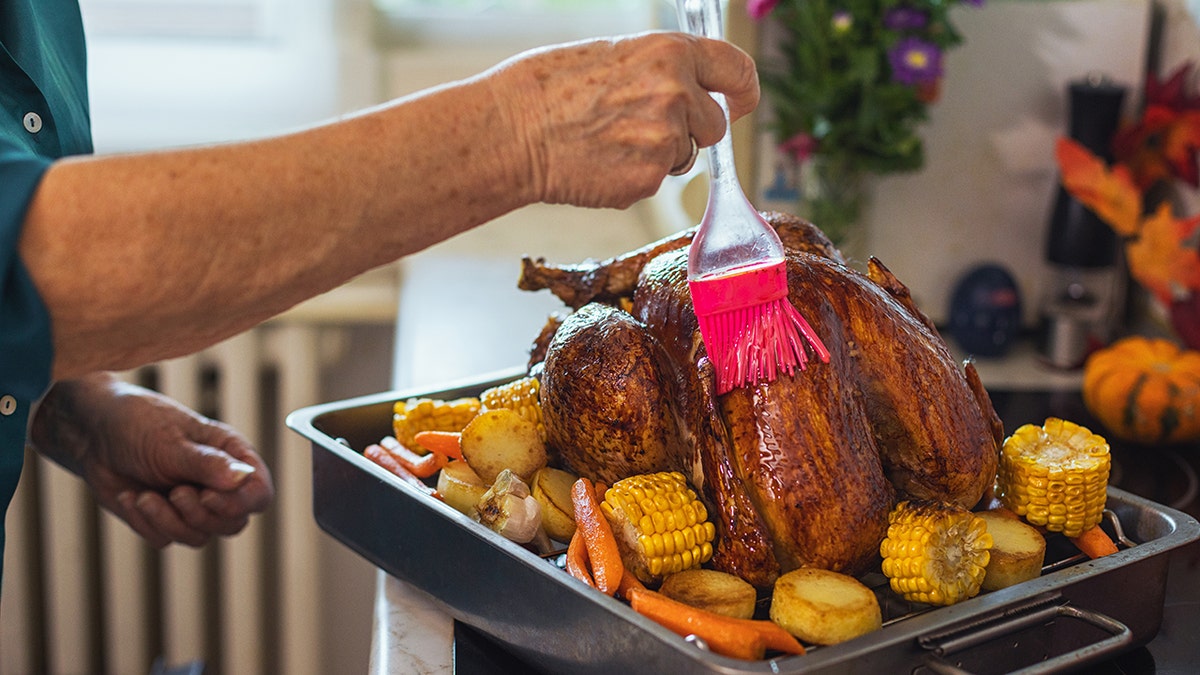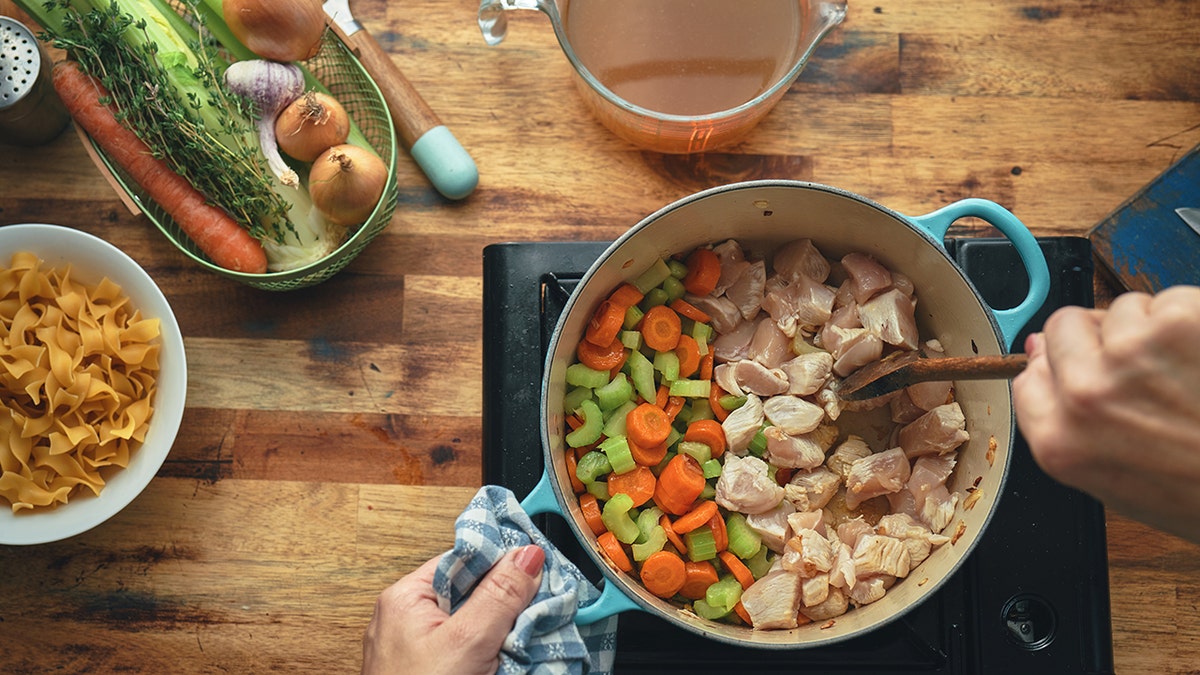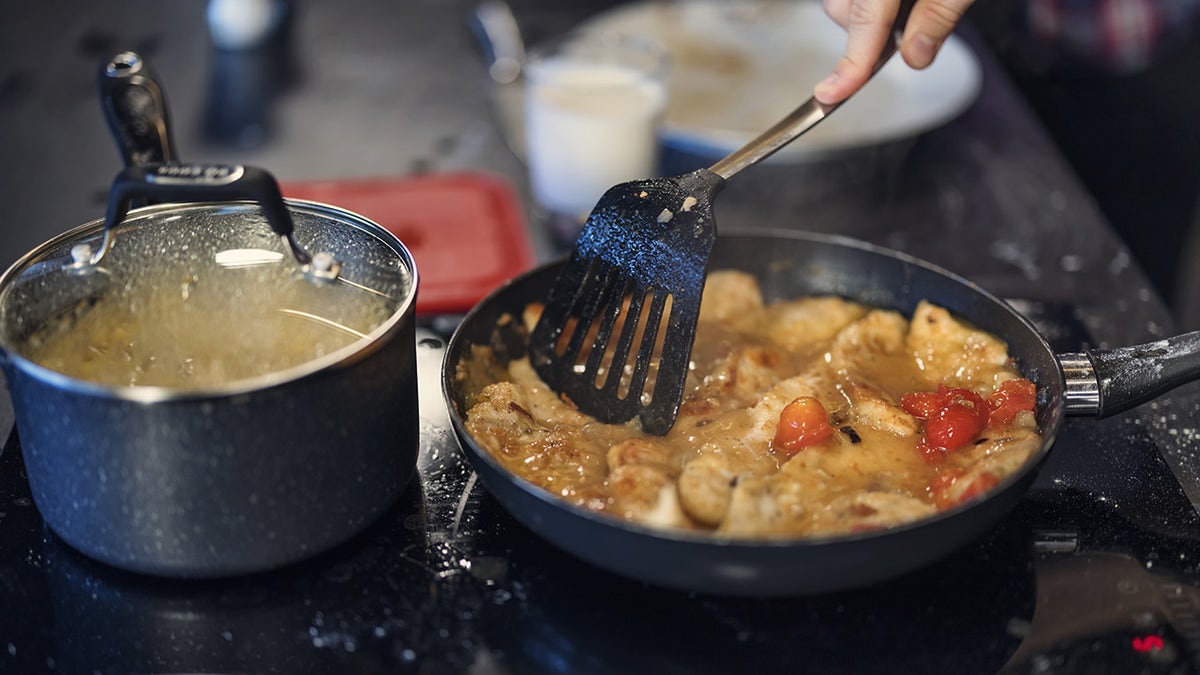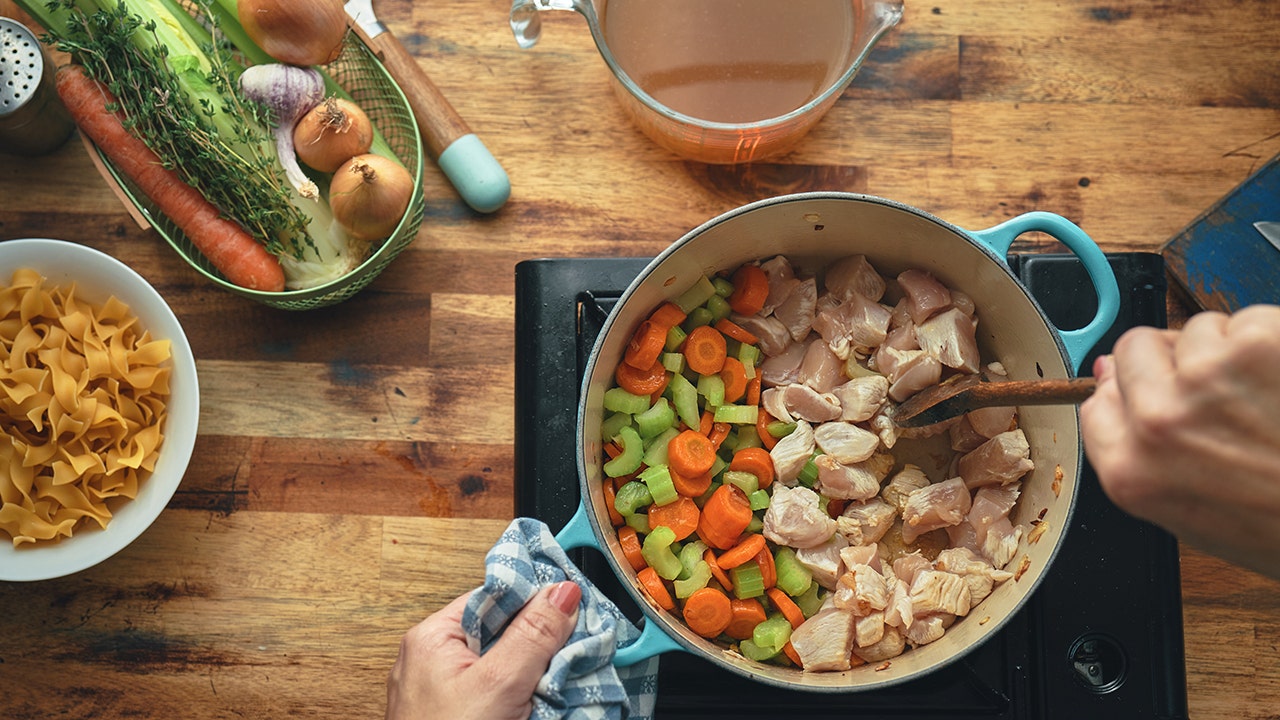NEWYou can now listen to Fox News articles!
A growing body of research suggests that how you cook your food — not just what you eat — may influence health and longevity.
The same high-heat methods that give steak its smoky crust, roast chicken its crispy skin, french fries their golden coating and pastries their browned edges also trigger complex chemical reactions in food.
When natural sugars react with proteins at high, dry heat, they create what’s known as the Maillard reaction, the process responsible for rich flavors, aromas and deep caramel colors, according to multiple sources.
COCOA EXTRACT COULD SLOW AGING PROCESS IN OLDER ADULTS, ‘PROMISING’ NEW STUDY FINDS
But the same reaction also produces potentially harmful compounds, including one known as advanced glycation end products (AGEs).
These compounds form naturally in the body and in browned or charred foods. They’ve been shown in studies to be associated with tissue stiffness, inflammation and cellular dysfunction.
“Eating more from very browned foods will add to the collective load of oxidative and inflammatory stress overall,” said Ed McCormick, a New Jersey-based food science consultant and CEO of Cape Crystal Brands, which makes natural emulsifiers and thickeners.
Over time, AGEs can accumulate in the body and have been linked to aging, heart disease and memory decline.
MEDITERRANEAN DIET PAIRED WITH OTHER LIFESTYLE CHANGES SLASHES DIABETES RISK
Higher AGE levels have also been associated with diabetes, cardiovascular disease, chronic kidney disease and neurodegenerative disorders such as Alzheimer’s, according to observational research from the German Institute of Human Nutrition Potsdam-Rehbruecke and other studies.
Burning or charring meat at high heat can also create chemicals linked to a higher cancer risk, according to the National Cancer Institute.

Marbled meats, skin-on poultry, bacon and cheesy toppings are especially prone to AGE formation, McCormick noted.
Cooking methods or sauces that include added sugars — such as glazes or barbecue sauce — can drive levels even higher, he added.
5 EVERYDAY FOODS AND DRINKS SILENTLY DAMAGING YOUR LONG-TERM HEALTH, SAY NUTRITION EXPERTS
High-temperature cooking methods such as grilling, broiling, roasting, frying and searing can increase AGE content in food up to 100-fold compared to uncooked versions, according to a 2004 Mount Sinai study that measured AGE content under laboratory conditions. Animal-based foods tend to produce the highest levels, it found.
Some social media creators are promoting the trend.
But plenty of cooking methods avoid this process.
Water-based cooking methods such as steaming, boiling, poaching and simmering can help preserve nutrients and limit AGE formation, HuffPost recently reported.
TEST YOURSELF WITH OUR LATEST LIFESTYLE QUIZ
Some social media creators are promoting the trend, often claiming benefits such as better hydration, improved cholesterol and anti-aging effects — though these claims haven’t been independently verified.
A recent Belgian study published in Cell Reports Medicine found that boiling and steaming the same ingredients under controlled conditions reduced AGE levels by about 50%.

The Mount Sinai researchers also found that marinating meat in lemon juice or vinegar for one hour before cooking can cut AGE formation roughly in half.
They recommend lower temperatures, shorter cooking times and covered dishes for the best results.
CLICK HERE FOR MORE LIFESTYLE STORIES
Adding antioxidant-rich herbs and spices such as rosemary, thyme, oregano and garlic can further reduce harmful high-heat byproducts in cooked meats and baked foods, according to multiple studies.
“The realistic promise is to lower the inflammatory burden, not reverse the clock,” McCormick said.

He advises using gentler, moisture-based cooking methods that stay near 212 degrees Fahrenheit to help limit the Maillard reaction, which intensifies once temperatures climb above about 300 degrees.
McCormick also recommends using slow cookers or pressure cookers, which add moisture and help prevent excessive browning. When grilling a main dish, he suggests pairing it with moisture-rich sides such as steamed vegetables or braised greens.
For flavor, he recommends leaning on aromatics, acids and umami — ingredients like miso, mushrooms, citrus or vinegar — and, if desired, finishing with a brief sear for texture and color.
Read the full article here





![‘Bernie Sanders and AOC Said the Quiet Parts Out Loud’: Mike Johnson [WATCH] ‘Bernie Sanders and AOC Said the Quiet Parts Out Loud’: Mike Johnson [WATCH]](https://www.lifezette.com/wp-content/uploads/2025/10/2025.10.17-09.29-lifezette-68f20c7d34ed8.jpg)

![Viral Country Song Shows Women Aren’t Buying the Feminist Girlboss Lifestyle Anymore [WATCH] Viral Country Song Shows Women Aren’t Buying the Feminist Girlboss Lifestyle Anymore [WATCH]](https://www.boredtrashpanda.com/wp-content/uploads/2025/11/2025.11.30-06.58-boredtrashpanda-692beb1382de0.jpg)

![Rogers Says Democrats Trying to ‘Start a Color Revolution’ [WATCH] Rogers Says Democrats Trying to ‘Start a Color Revolution’ [WATCH]](https://www.lifezette.com/wp-content/uploads/2025/07/2025.07.07-01.09-lifezette-686bc6f761807.jpg)


